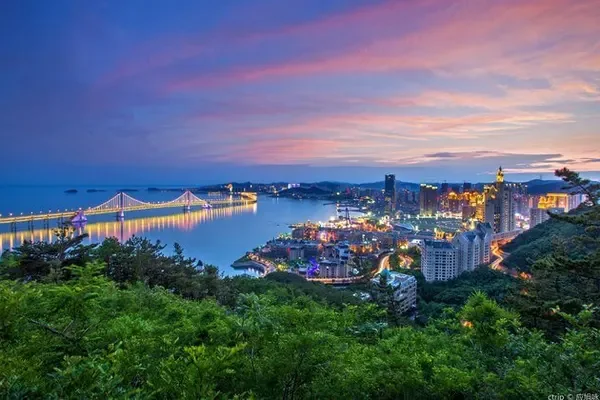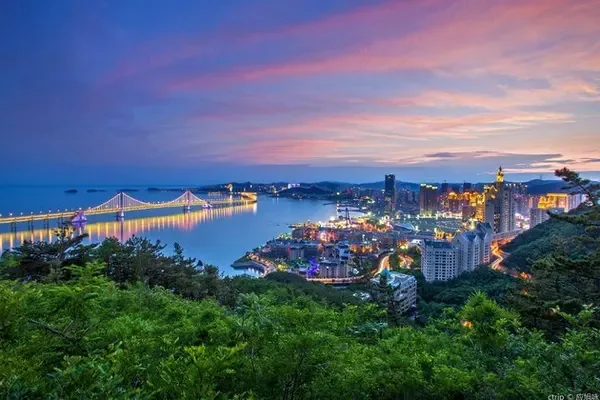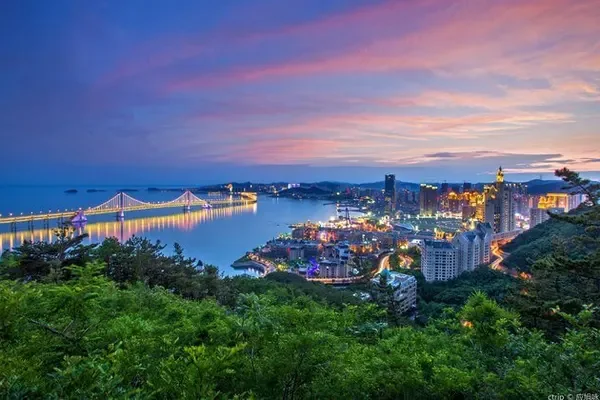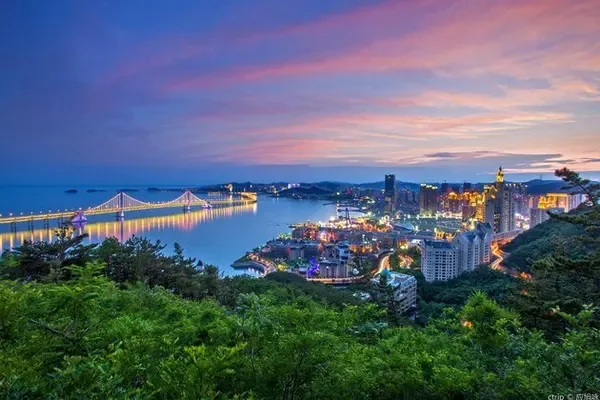[Continued] The fourth part of "Shanzong? Water Source? Road Zhichong——Qinghai in the Belt and Road Initiative" is "Tubo's Eastward Advance"

In the 6th century AD, the Tubo regime was established in the Shannan area of Tibet. The emerging Tubo regime expanded towards Qinghai, and finally conquered Tuyuhun. The Tang and the Tibetans immediately launched a protracted military and political contest in the Qinghai area. After the outbreak of the Anshi Rebellion, Tubo took advantage of the opportunity of the Tang army's eastward transfer to quell the rebellion and occupied most of Qinghai. After the mid-ninth century, civil strife continued in Tubo, and Zhang Yichao, a Han from Shazhou, once took the opportunity to control the eastern part of Qinghai. At the end of the Tang Dynasty, a large-scale civilian slave uprising broke out throughout Tubo, and the Tubo forces in Qinghai also fell apart and were no longer united. During the Tang and Tibetan Dynasties, a road connecting the Central Plains with Tibet, Nepal, and India emerged, that is, the Tang and Tibetan Ancient Road. Qinghai has become the only way for this road of commerce and trade between the Central Plains and South Asia and the road of national friendship.


The fourth part "Tubo's Eastward Advancement" is divided into three units, the first unit is "Tang and Tibetan Wars"













The second unit of the fourth part "Tubo's Eastward Advancement" is "Tangbo Ancient Road"

(Princess Wencheng went to Tubo along the road marked by this solid line and married Songtsan Gampo)



















The third unit of the fourth part "Tubo's Eastward Advancement" is "Dulan Tombs". More than 300 ancient tombs were discovered in Dulan County, Qinghai Province, and a large number of precious cultural relics were unearthed. Numerous gold exhibits make this exhibition hall look resplendent .

(This showcase exhibits the cultural relics unearthed from Tomb No. 1 in Dulan Tubo, among which there are many Western cultural relics, reflecting the frequent international exchanges in that era. For detailed cultural relics, see the photo below)









(Above is another national treasure-level cultural relic—gilt silver belt decorated with beads of Western gods and figures (Silk Road), Tang Dynasty, total length 95 cm, width 3.3 cm, thickness 0.4 cm, plaque diameter 6.5 cm, Qinghai Provincial Museum Collection)

(Let's take a closer look at its details)

(The belt is woven with silver thread and is in the shape of a long strip. It is decorated with seven round silver-coated plaques, on which patterns of Western gods and figures are cast. The bead pattern is a continuous arrangement of circles or beads of the same size A decorative pattern that was popular in Persia during the Sasanian period)

(During the heyday of the Tang Dynasty, with the opening of the "Silk Road", the traditional lianzhu pattern form was branded with the aesthetic brand of a new civilized territory, and lianzhu decoration became a very popular decorative art element in the Tang Dynasty)

(The gold medal belt is decorated with seven round beaded plaques and two square beaded plaques, which is the result of absorbing foreign cultural and artistic nutrition from traditional patterns in this period.)

(The exhibits in this showcase are also cultural relics unearthed from the Tubo tomb in Dulan)






















(Personal mermaid gold ornaments, this set of cultural relics consists of three pieces, front, middle and back, Tang Dynasty, 4.2 cm high, 0.03 cm thick, unearthed from Rehui Tombs, Dulan County, Haixi Mongolian and Tibetan Autonomous Prefecture. The ornaments are thin, with patterns Chiseled and carved. The overall shape is long, wide at the front and narrow at the back, with nail holes around the periphery. The front end is a figure, the hair is tied on the forehead, the back is a ribbon, the lapel robe is held on the right, and the feather tail is grasped on the left. Two wings, bird's feet below, and fish body and tail behind it, with fish scale decoration)

(Gemstones were originally inlaid in the hollow, but they have fallen off. The utensil may belong to the decoration of the scabbard. The image of a fishtail with a human body is rare, with mythological and religious connotations, and has special research value)




(A riding-shooting gold ornament, Tang, 13.5 cm long, 9.8 cm high, 0.04 cm thick, unearthed from Rehui Tombs, Dulan County, Haixi Mongolian and Tibetan Autonomous Prefecture. The overall piece is light and thin, with nail holes around the periphery. Samurai The image is mighty, riding a galloping horse, full bow and string, wearing a mountain-shaped crown on the head, two braids hanging behind the head, a mustache, large earrings, narrow sleeves, double-breasted lapels and bead pattern clothing, and an arrow-shaped saber on the leather belt. , wearing leather boots, saddles, stirrups, and harnesses are clearly depicted. The coffin paintings unearthed in Dulanguo Limu are painted with images of riding and shooting. "New Book of Tang? Biography of Tubo" records: "The big guests at the banquet must drive yaks , so that the guest shoots himself, he dares to give back")

(Gold plaque with Benlu patterns, Tang Dynasty, 13 cm long, 9.2 cm high, and 0.04 cm thick, unearthed from Rehui Tombs, Dulan County, Haixi Mongolian and Tibetan Autonomous Prefecture. The plaque is light and thin, with carved patterns and nails on the periphery Kong. The image of the deer is majestic, with prominent muscles, galloping hooves, huge branches and horns, the hair is continuously chiseled with short lines, and the belly is the ground with fish roe. The utensils may be combined with hunting figure decorations, but the group relationship has been lost. Animal details The expression is rich, reflecting the super observation and expressive power of the ancients)









(This turquoise-trimmed belt is exquisite, and can be admired carefully from the three photos below)





(The saddle bridge made of gold is very finely carved, you can appreciate the details from the three photos below)





(The affixed gold leaf can be clearly seen on the rusty silver plate)




The fifth part of the exhibition "Mountains? Water Sources? Roads - Qinghai in the Belt and Road Initiative" is "Hai Na Bai Chuan"
In 842 AD, with the murder of Tubo Zanpu Dama, the Hehuang area of Qinghai fell into a state of scattered tribal rule. In 1032 A.D., Qingtang City (now Xining City) was established as the capital of Zongsiluo, and a local government with Tubo as the main body was established. In the third year of Chongning (1104 A.D.), the Song army occupied the Hehuang area and changed Shanzhou to Xining Prefecture. This is the beginning of "Xining" in history. After the fall of the Northern Song Dynasty, Jin and Xixia occupied the eastern part of Qinghai and the area south of the Yellow River for about a century. In 1227 AD, the eastern region of Qinghai was incorporated into the territory of the Mongolian Khanate. In 1370 A.D., the Ming army took control of the eastern part of Qinghai. In the sixth year of Hongwu (1373 A.D.), Xining Prefecture was changed to Xiningwei. In the early Qing Dynasty, the Hehuang area was controlled by Gushi Khan, the leader of the Mongolian Heshuote tribe. In the early years of Yongzheng, after the Luobuzangdanjin rebellion was put down, the Qing government formally realized its rule over the Hehuang area of Qinghai.
Since the Yuan Dynasty, the Hehuang area of Qinghai has shown a pattern of multi-ethnic settlements and the coexistence and development of various religions. During this period, the tea-horse trade flourished, and the Ancient Tea-Horse Road in Qinghai became an important channel connecting the tea-horse trade between the Central Plains and Tibetan areas.

The fifth part "Hai Na Bai Chuan" is divided into four units. The first unit is "Qing Tang Regime", which mainly introduces the development of Qinghai culture in Song and Yuan Dynasties.










(Tile with human face patterns, Song Dynasty, 14.5 cm in diameter, 1.3-1.8 cm thick, unearthed from Heichengzi Site, Xunhua County, Haidong City, Qinghai Provincial Institute of Cultural Relics and Archeology. Mud gray pottery, handmade, fat cheeks, round jaw , slightly exposed teeth, rhinoplasty, protruding eyes, slanted eyebrows, forehead ray pattern. Although the production is rough, it is very vivid)





The second unit of the fifth part "Inclusive of All Rivers" is "Religious Culture".


(Bronze gilt statue of Avalokitesvara, Ming Yongle period, 146.5 cm high, 63.5 cm long, 44 cm wide at the bottom, Qinghai Provincial Museum collection. The Bodhisattva wears a Buddha crown on his head, decorated with necklaces and streamers all over his body, holds a lotus branch, and bares his chest The waist is covered with a skirt, and the feet are standing on the lotus seat. The waist is narrow, the umbilical fossa is deep and elastic, and the overall posture is "S" shaped. The hands and feet are flexible and slender, showing a feminine beauty. There is an inscription of "Yongle Nianshi in the Ming Dynasty". The overall style is graceful, luxurious and magnificent. It is a model of Yongxuan court statues in the Ming Dynasty)









(Bronze Buddha statues of Tibetan Buddhism are exhibited in this showcase)













(The exhibits in this showcase are ritual instruments used in Tibetan Buddhist religious ceremonies)



(Color-painted Thangka Sakyamuni’s Descending from Heaven, Ming Dynasty, 117 cm long, 68 cm wide, 65 cm long, 50 cm wide, Qinghai Provincial Museum. The story of Buddha’s biography is Tibetan Buddhist Thangka and murals One of the themes that are often shown in Chinese. There are six thangkas in this group of stories about Buddha's biography, which respectively express the important stories of Sakyamuni's life in the form of paintings. This thangka depicts the plot of Sakyamuni's descent from heaven , painters use flexible techniques in composition, go through stylized rituals, and connect storylines that happened in different times and spaces on one plane, showing the rich imagination of painters. Chinese style is emphasized in the painting The organic combination of eaves and mountain-style buildings and Tibetan-style treasure tops reflects the mutual exchange of Chinese and Tibetan cultures)

(Phone-copper Manza with Eight Treasures, Qing Dynasty, 18 cm in diameter, collected by Qinghai Provincial Museum. Manza is one of the secret offerings, and Manza means "mandala". Manza plate is all precious in the world, including The four continents of the sun and the moon form a mandala to support the Buddhas. The Manza plate visualizes various offerings, casts them into utensils, and puts them on the plate. Generally, they are hollow and ring-shaped, and are made of thin skins such as silver and copper. Carved, very fine, inlaid with jewels, also made of pearls connected with wire strings, and woven into various patterns, converging upwards layer by layer, forming a tower shape. When practicing, while reciting, sprinkle on the Manza plate Put gravel treasures on top, sprinkle the bottom layer and put another layer, and then put the last layer on top one by one, which symbolizes wishing for auspiciousness and happiness, and offering the dharma world to the Buddhas and Bodhisattvas. This piece is made of silver, with exquisite patterns carved on the front, There is a mandala in the middle, surrounded by eight hidden treasures, and sea and mountain patterns on the edge, exquisite workmanship)










(The character in the middle is "Printed Version of Qing History", see the next photo for explanation)









(Several murals from Buddhist temples in Qinghai have been restored on the walls of the exhibition hall)

The third unit of the fifth part "Inclusive of all rivers" is "Unity of Diversity".

(Tibetan Buddhism has multiple sects in Qinghai, and eventually formed a pluralistic unity)








(The seals and ribbons of Qinghai officials in the Ming and Qing Dynasties are displayed in this showcase)










(What is displayed in this showcase is the proclamations issued by the Dalai Lama and the Panchen Lama to the living Buddhas of lower-level monasteries during the Qing Dynasty)







(Emperor Qianlong issued a notice to find the reincarnated soul boy of the living Buddha, written in both Manchu and Tibetan)



The fourth unit of the fifth part "Hai Na Bai Chuan" is "Tea Horse Road".









(Gold Medal Letter Talisman, Ming Dynasty, 23.6 cm high, 8.1 cm wide, 0.7 cm thick, handed down from generation to generation, collected by Guide County Museum, Qinghai Province. Copper painted gold, rectangular, semicircular top, cast regular script "Xinfu" on the front , with 4 characters of "emperor's decree" in seal script cast on the back, and 8 characters of "combined with the errand, and those who do not believe will be cut off" at the bottom. There is the word "No. 15" on the seam. This kind of gold medal letter with the number "Shiwu" is the same year. One of the 21 gold medals issued to Biliwei. This letter is a special certificate for the trade of tea and horses in the Ming Dynasty. In the early years of Hongwu, after the opening of the tea-horse trade, private tea was serious, and Zhu Yuanzhang ordered strict control and torture. According to "Ming Huidian" records that the Ming Dynasty produced a total of 41 gold medal letters, and distributed them to the tribes of Shatao, Hezhou, and Xining, among which 21 of the 29 Xifan tribes in Biliwei, Hezhou. Officials are dispatched every three years Once a match, tea was exchanged for horses. This system was stopped until the 14th year of Yongle (1416) due to the relaxation of the tea ban; "Gold medal". The application of the strategy of "using tea to control the fans" is most typical of the implementation of the "gold medal dispatch horse" system. The gold medal dispatch horse, also known as the dispatch horse, is the emperor's "send" to his subjects. The certificate held by the chief clan to pay horses to the Ming court on schedule)










The sixth part is to watch the video: Qinghai in the Belt and Road Initiative

Conclusion: Qinghai is rich in mountains and rivers, the landform is divided into north and south, and it has both culture, agriculture and animal husbandry. In Qinghai, which guards the central area, ethnic groups live together and integrate, and the transportation links China and foreign countries.
The mountains, water, and roads of the past are the stage for interpreting the profound history of Qinghai. However, to explore the history and culture of Qinghai needs to further expand the time and space dimensions of history, and contemplate in a broader perspective. Perhaps you will find:
The most important chapter in the history of Qinghai is actually what role Qinghai assumed and what functions it played when various forces outside Qinghai confronted each other, that is, the history of Qinghai was “not in” Qinghai. Because she is always the link and node, the eyes of the rulers always look over the valleys and mountains of Qinghai, and their thoughts are either lingering at the ends of the ancient roads, or following the rushing water of the river Huang.
Times have changed, and Qinghai in the new China now has its own new positioning. In the new era of national unity and wealth and prosperity, let’s look at the beautiful Qinghai—large because of the strength of the motherland, and beautiful for the sweetness of life!
After watching the exhibition for four hours, I walked out of the exhibition hall at one o'clock in the afternoon, took the elevator to another exhibition hall on the third floor, and continued to watch "Wangjun Ji'an"! 【To be continued】



